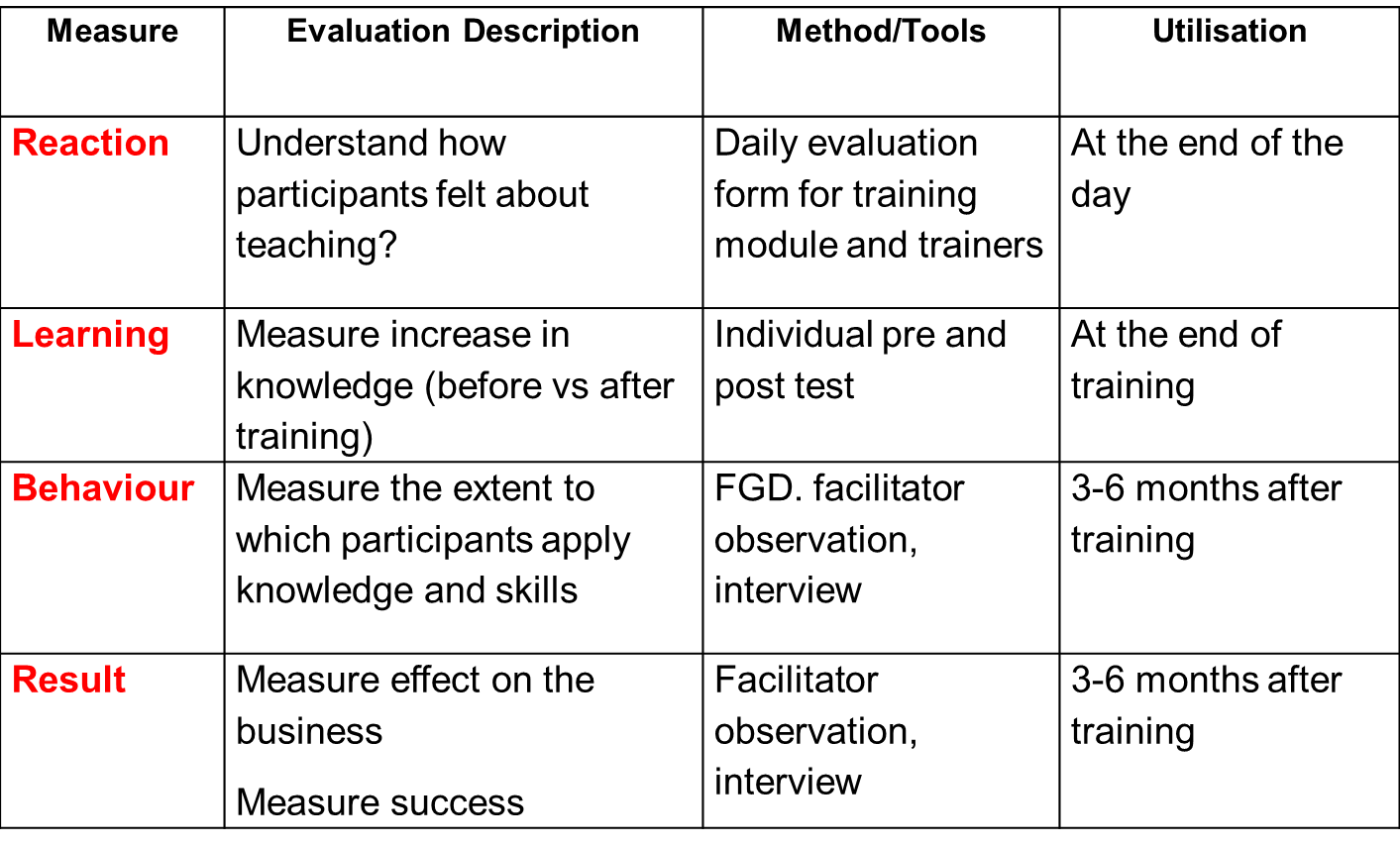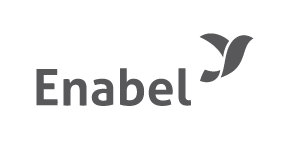Evaluation of trainings: Using the Kirkpatrick model
Evaluating trainings
The general and specific objective of the BTC Scholarship Programme is to contribute to the institutional capacity development and the organizational strengthening of beneficiary government institutions in two sectors: Local Government Reform (LGR) and Natural Resources Management (NRM). To achieve these objectives, practical trainings about LGR and NRM are given in selected districts in the country. The project is approaching its end and most of the trainings have been conducted by now. In the last phase of the project, it’s very important to undertake a final evaluation of the impact of the trainings in the daily performance of these selected institutions. For this evaluation, specific follow-up tools have been created. The Kirkpatrick model has been used to improve these evaluation tools and to check whether the trainings are evaluated at all critical levels.The Kirkpatrick model
The Kirkpatrick Model is a model for evaluating the effectiveness and impact of a training in order to improve the training. The model takes into consideration 4 levels of evaluation.- Level 1: Reaction
- Level 2: Learning
- Level 3: Behaviour
- Level 4: Results
The third level measures changes on the job due to the training. Did the training influence how learners perform in their jobs? Do they apply the learned knowledge, skills and/or attitudes in their work? As many people as possible that could be in a position to notice changes in the work performance of the training participants should be interviewed at this stage. For example:
- Participant/ learner
- Supervisor/mentor
- People who the trainees deliver service too (customers/ community)
- Colleagues
Latest news from this project
No news

